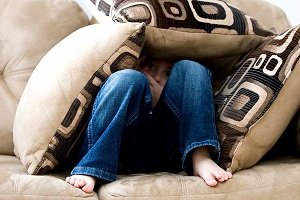How to Get Rid of Childhood bipolar disorder
TweetHealthy children often have moments when they have difficulty staying still, controlling their impulses, or dealing with frustration. The Diagnostic and Statistical Manual IV (DSM-IV) still requires that, for a diagnosis of bipolar disorder, adult criteria must be met. There are as yet no separate criteria for diagnosing children.
Some behaviors by a child, however, should raise a red flag:
- destructive rages that continue past the age of four
- talk of wanting to die or kill themselves
- trying to jump out of a moving car
To illustrate how difficult it is to use the DSM-IV to diagnose children, the manual says that a hypomanic episode requires a "distinct period of persistently elevated, expansive, or irritable mood lasting throughout at least four days." Yet upwards of 70 percent of children with the illness have mood and energy shifts several times a day.
Since the DSM-IV is not scheduled for revision in the immediate future, experts often use some DSM-IV criteria as well as other measures. For example, a Washington University team of researchers uses a structured diagnostic interview called Wash U KIDDE-SADS, which is more sensitive to the rapid-cycling periods commonly observed in children with bipolar disorder.
What is the need for Diagnosis of Childhood Bipolar Disorder?
Tragically, after symptoms first appear in children, years often pass before treatment begins, if ever. Meanwhile, the disorder worsens and the child's functioning at home, school, and in the community is progressively more impaired.
The importance of proper diagnosis cannot be overstated. The results of untreated or improperly treated bipolar disorder can include:
- an unnecessary increase in symptomatic behaviors leading to removal from school, placement in a residential treatment center, hospitalization in a psychiatric hospital, or incarceration in the juvenile justice system
- the development of personality disorders such as narcissistic, antisocial, and borderline personality
- a worsening of the disorder due to incorrect medications
- drug abuse, accidents, and suicide.
It is important to remember that a diagnosis is not a scientific fact. It is a considered opinion based upon the behavior of the child over time, what is known of the child's family history, the child's response to medications, his or her developmental stage, the current state of scientific knowledge and the training and experience of the doctor making the diagnosis. These factors (and the diagnosis) can change as more information becomes available. Competent professionals can disagree on which diagnosis fits an individual best.
Diagnosis is important, however, because it guides treatment decisions and allows the family to put a name to the condition that affects their child. Diagnosis can provide answers to some questions but raises others that are unanswerable given the current state of scientific knowledge.
Bipolar Disorder - Bipolar Disorder is the form of depressive illness in which the sufferer has periods of being on a high, as well as periods of depression.
The less severe form of high in bipolar disorder is hypomania.
Treatment of Bipolar Disorder - Effective treatment is available for bipolar disorder.
What is the cause of Bipolar Disorder? Learn about various causes of bipolar disorder such as family tree, your genes, loss of job, etc.
What are the symptoms of Bipolar Disorder? There are various symptoms of bipolar disorder.
Can Adolescent have bipolar disorder? Bipolar disorder can occur in adolescents and has been investigated by federally funded teams in children as young as age 6.
Can Bipolar Disorder occur in childhood? Children experience faster mood swings than adults, often cycling many times within a day.
Bipolar disorder - a case study Millions of Americans diagnosed with mental illness lead healthy lives because of information discovered through clinical studies.
History of bipolar disorder - Bipolar disorder has left its mark on history.
Importance of Bipolar disorder diagnosis Diagnosis is important, because it guides treatment decisions.
What is the need of diagnosis of bipolar disorder in childhood? The importance of proper diagnosis cannot be overstated.
What are the types of bipolar disorder? Learn about various types of bipolar disorder.
How bipolar disorder in childhood be helped and what is the role of parents? Your child can reduce the minor mood swings and stresses that sometimes lead to more severe episodes by adhering to the following tips.


Sometimes crying or laughing
are the only options left,
and laughing feels better right now.

Current Issue
 Self Help Leaflets Take the help of our self help leaflets or booklets. |
 The DG Magazine All about living with depression |


















